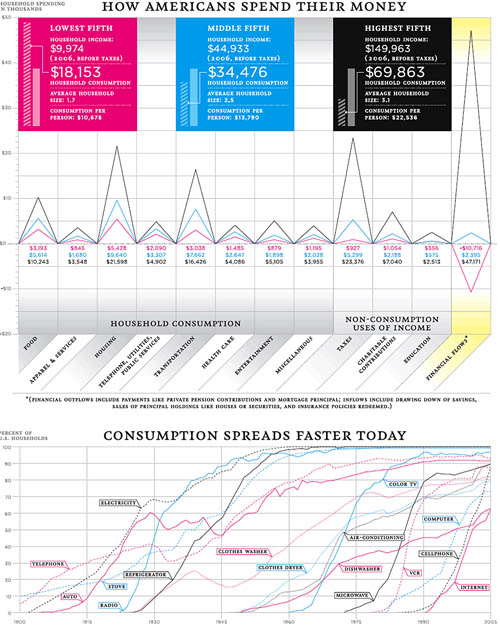
This article by the New York Times explains why ‘consumption’ not ‘income’ is the best indicator of wealth. The article explains that the top fifth makes 15 times more income than the bottom fifth. But when compared using consumption as the criteria of wealth the upper rich only consume four times that of the bottom fifth. The article indicates that new technologies become cheap quicker than in times past. Global trade lowers input costs and maximizes efficiencies for each country involved. With recession looming the author warns that protectionist measures will actually drive up the cost of everyday goods and leave the poor even poorer.
A really cool graph
The article makes an interesting point and the chart they attached is even more interesting. Some of the most interesting observations from the chart are:
- The rich spend much more on education than the poor do. The poor don’t even register on the chart for their educational spending.
- The rich spend a considerable amount of their income on taxes and savings. The poor actually have negative savings.
- New products are only taking 15 years to hit 80% market saturation instead of 50-70 years required in the past.
- Multiple items per household is much more common. Multiple cars, televisions, computers would be unheard of 50 years ago.
- The rich donate more of their income to charities than the poor or middle class. Each class donated poor 5.8%, middle class 6.3%, and the rich 10%.
Note: The problem with this chart is that it doesn’t distinguish age groups. The “poor” in the study make up a large number of retired people. These people are drawing down on past savings and wouldn’t be investing in education, thus skewing the numbers. Even with that consideration many of the observations hold true. The middle class saves much less, spends more on vehicles, are less charitable, and invest less in education than do rich folks. I can’t help but think of the lessons in Rich Dad Poor Dad when I see a study like this.


